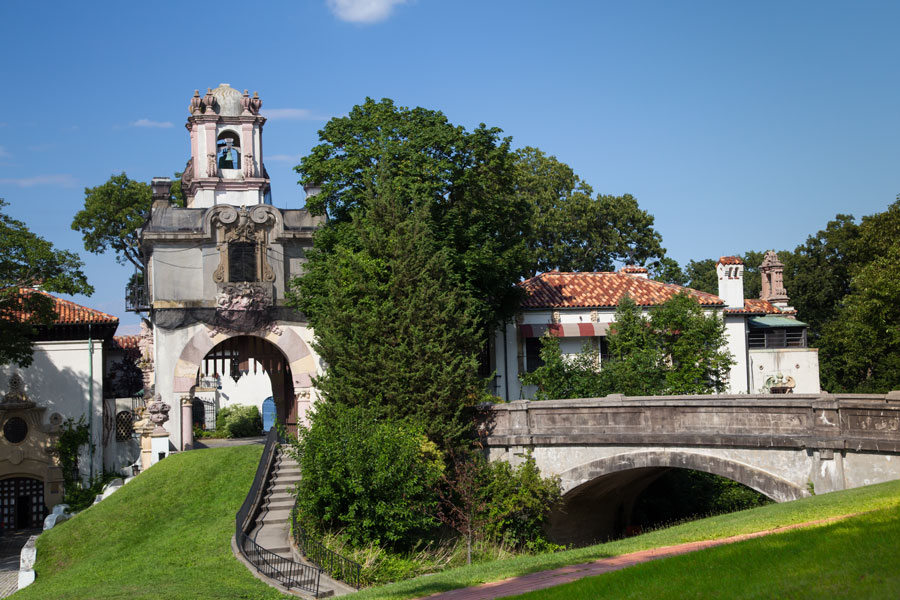Vanderbilt Museum and Planetarium

The Vanderbilt Museum and Planetarium, located in Centerport, New York, is a cultural and educational institution dedicated to preserving the legacy of the Vanderbilt family and promoting science, history, and the arts. Situated on the former estate of William K. Vanderbilt II, the museum encompasses a historic mansion, a planetarium, extensive gardens, and natural habitats, offering visitors a unique blend of history, science, and natural beauty.
History:
The Vanderbilt Museum and Planetarium traces its origins to the early 20th century when William K. Vanderbilt II, a member of the prominent Vanderbilt family and an avid traveler and collector, acquired a sprawling estate on the North Shore of Long Island. Inspired by his travels around the world, Vanderbilt transformed the estate into a showcase of art, culture, and natural history, housing his extensive collections of artifacts, specimens, and memorabilia.
Upon Vanderbilt’s passing in 1944, the estate was bequeathed to Suffolk County, with the stipulation that it be used for educational and cultural purposes. In 1950, the mansion was opened to the public as a museum, featuring exhibitions on marine biology, natural history, and world cultures. Over the years, the museum has expanded its facilities and programming, adding a planetarium, gardens, and educational programs to its offerings.
Collections and Exhibitions:
The Vanderbilt Museum and Planetarium boasts a diverse collection of over 40,000 objects, artifacts, and specimens spanning centuries of history, culture, and science. The museum’s exhibits cover a wide range of topics, including marine life, ethnography, fine and decorative arts, and historic artifacts related to the Vanderbilt family.
Highlights of the museum’s collection include William K. Vanderbilt II’s marine and natural history specimens, Asian and African art and artifacts, and decorative arts from around the world. The museum also features rotating exhibitions showcasing contemporary art, photography, and cultural heritage, providing visitors with opportunities to explore new perspectives and experiences.
Planetarium and Astronomy Programs:
The Vanderbilt Museum’s Charles and Helen Reichert Planetarium offers immersive astronomy experiences, including multimedia shows, star talks, and telescope viewing sessions. The planetarium’s state-of-the-art projection system allows visitors to journey through the cosmos, explore distant galaxies, and learn about the wonders of the universe.
In addition to its public shows, the planetarium hosts educational programs for schools, youth groups, and astronomy enthusiasts, covering topics such as space exploration, celestial navigation, and the history of astronomy. These programs are designed to inspire curiosity, promote scientific literacy, and foster a deeper appreciation for the wonders of the cosmos.
Gardens and Natural Habitats:
The Vanderbilt Museum’s expansive grounds feature beautifully landscaped gardens, natural habitats, and scenic walking trails, providing visitors with opportunities to explore and connect with nature. The gardens showcase a diverse array of plant species, including native and exotic varieties, and are home to wildlife such as birds, butterflies, and amphibians.
The museum’s natural habitats include a marine exhibit featuring live fish, turtles, and other aquatic creatures, as well as outdoor habitats showcasing local flora and fauna. These outdoor spaces offer visitors a tranquil retreat where they can enjoy the beauty of the natural world and learn about conservation efforts to protect Long Island’s biodiversity.
Education and Outreach:
The Vanderbilt Museum and Planetarium is committed to providing educational programs and resources that inspire curiosity, creativity, and lifelong learning. The museum offers guided tours, school field trips, summer camps, and workshops focused on science, history, art, and culture, providing hands-on experiences that engage visitors of all ages and interests.
Through its outreach initiatives, the museum collaborates with schools, community organizations, and cultural institutions to develop programs that promote access to the arts and sciences and enhance the cultural vitality of the region. These efforts aim to inspire the next generation of scientists, artists, and global citizens, ensuring that the Vanderbilt Museum remains a cherished resource for generations to come.
Facilities and Amenities:
The Vanderbilt Museum and Planetarium is housed within a historic mansion surrounded by lush gardens, natural habitats, and scenic vistas overlooking Northport Bay. The museum’s facilities include exhibition galleries, a planetarium theater, classrooms, and event spaces, as well as outdoor amenities such as picnic areas, walking trails, and a waterfront promenade.
Visitors to the museum can also enjoy amenities such as a museum shop offering a selection of books, gifts, and souvenirs, as well as a café serving refreshments and light snacks. The museum’s facilities are accessible to visitors with disabilities, with designated parking, ramps, and assistive devices available to ensure a welcoming and inclusive experience for all.
Community Engagement and Impact:
As a cultural and educational hub in Centerport and the surrounding region, the Vanderbilt Museum and Planetarium plays a vital role in fostering community engagement, cultural enrichment, and environmental stewardship. The museum collaborates with local organizations, businesses, and government agencies to develop programs and initiatives that promote access to the arts, sciences, and humanities and contribute to the overall well-being of the community.
Through its exhibitions, programs, and events, the Vanderbilt Museum serves as a gathering place for residents and visitors alike, fostering dialogue, creativity, and connection. Its impact extends beyond its walls, enriching the cultural landscape of Long Island and inspiring future generations to explore, discover, and appreciate the wonders of the world around them.

